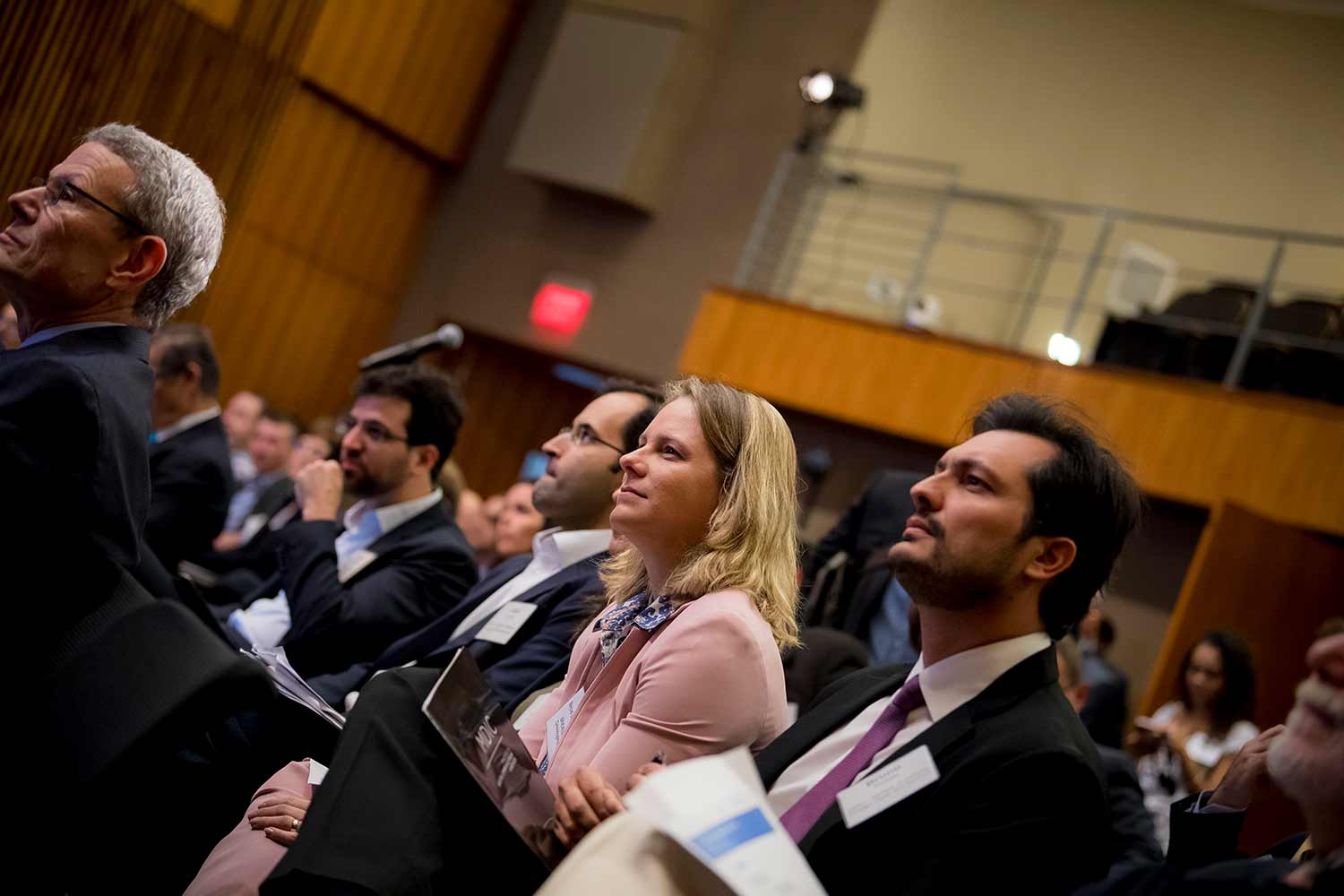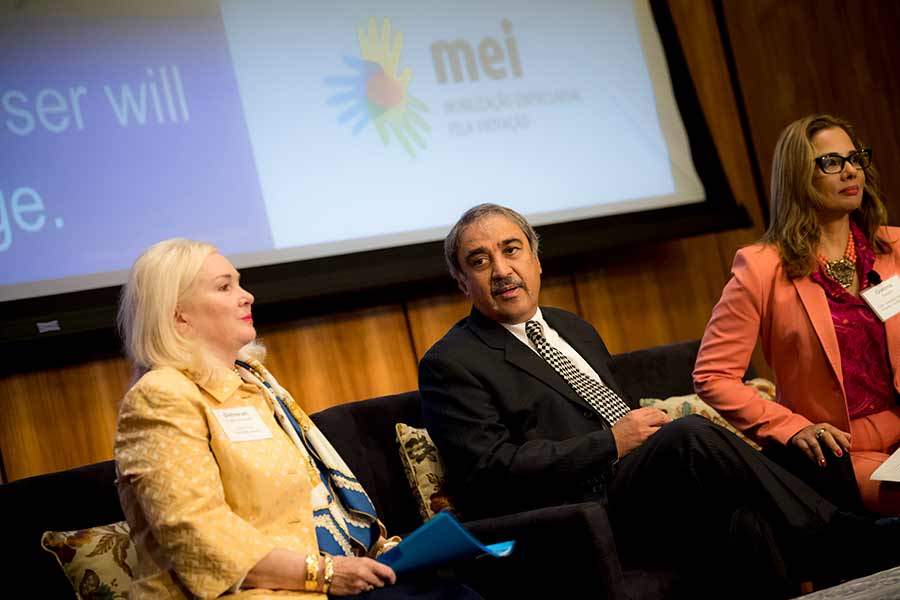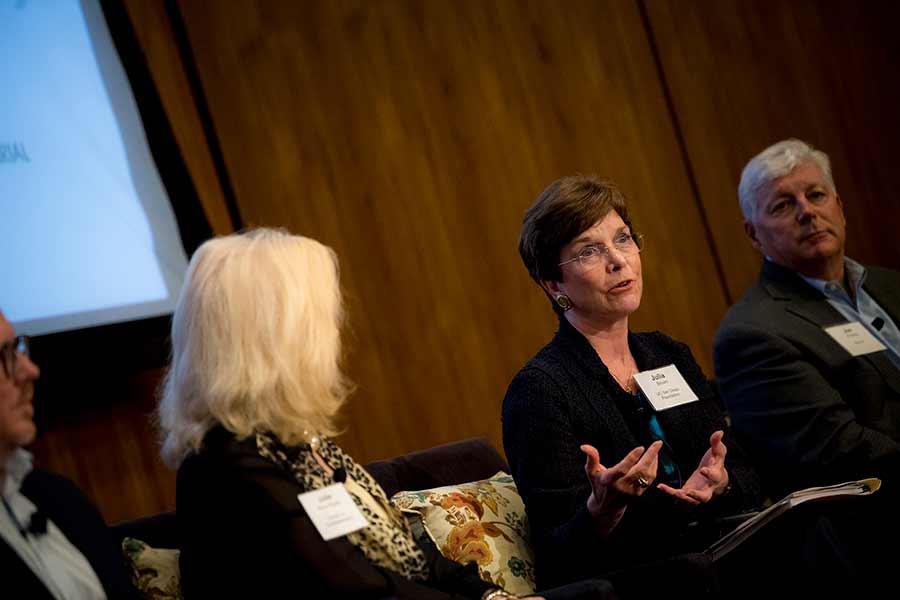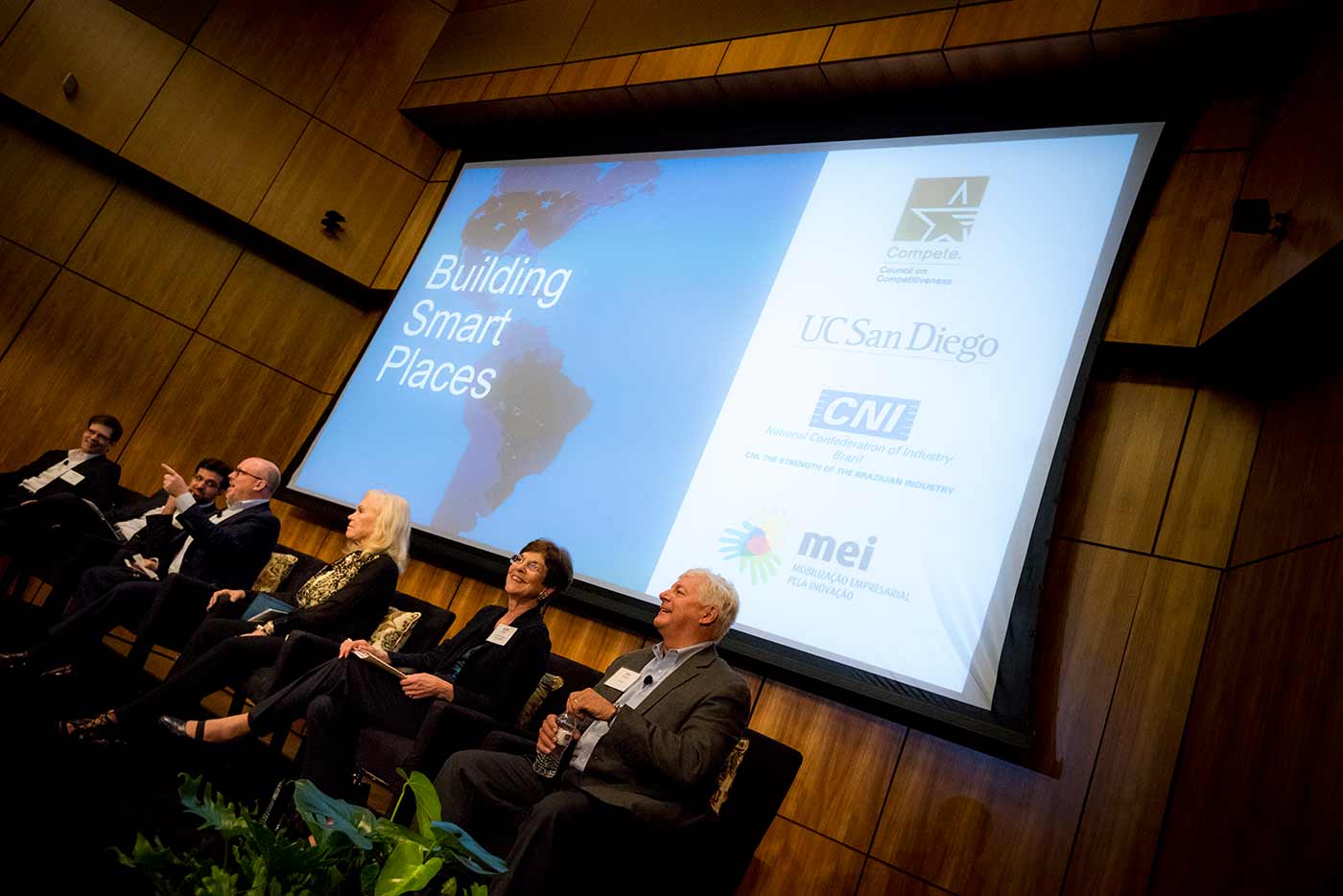
By:
- Kim McDonald
Published Date
By:
- Kim McDonald
Share This:

Photos by Erik Jepsen/UC San Diego Publications
Campus Hosts Summit with Innovation Leaders from U.S. and Brazil
The distance to São Paulo, Brazil’s largest city and the most populous metropolis in the Americas and Southern Hemisphere, is more than 6,000 miles away.
But high-tech and biotech pioneers in the San Diego region managed to easily bridge that gap last week, developing new partnerships with their Brazilian counterparts at a high-level summit on the UC San Diego campus that brought together 100 innovation leaders from the U.S. and Brazil.
The goal of the summit, which was organized by the Council on Competitiveness, a Washington, D.C. organization that seeks to bolster U.S. productivity, was to allow innovators from both nations to meet and discuss potential collaborations on future technologies in order to maintain the economic productivity of both nations in the face of global economic slowdowns.

COC President Deborah Wince-Smith, Chancellor Pradeep K. Khosla and CNI’s Gianna Sagazio (left to right) opened the summit.
The event was hosted by UC San Diego Chancellor Pradeep K. Khosla, a member of the council’s executive committee. And it was clear from the formal and informal discussions that San Diego and, more specifically, the UC San Diego campus, was the appropriate venue for their meeting.
The United States and Brazil are the two largest economies in the Western Hemisphere, as well as two nations that supply much of the food and energy to the rest of the world.
In addition, many of the key sectors of San Diego’s high-tech and biotech economy are also important in Brazil, such as aerospace, artificial intelligence, energy efficiency, renewable energy and telecommunications and data sciences.
As a result, UC San Diego’s role in transforming San Diego from an economy dependent on the military into a technology-based region that has become one of the most innovative in the world proved to be an important case study for the Brazilian participants looking for new ways to grow their high-tech industries.
Speaker after speaker emphasized that having companies in close proximity to a world-class research university that educates first-rate scientists and engineers and that conducts the kind of fundamental research that can continually produce game-changing innovations is a critical ingredient in sustaining a technologically-based economy.
“The best long-term strategy for success is to invest in basic research and development and education,” said Julie Meier Wright, a senior fellow for the Council on Competitiveness and the California Council on Science and Technology.
“Research universities,” she added, “are critically important if they are connected to the community.”

Biotech pioneer Julia Brown: UC San Diego “has become the centerpiece of San Diego’s overall research program.”
Julia Brown, one of the pioneers of San Diego’s biotech industry, noted that San Diego had “the great fortune of visionary leaders” who reserved development of the Torrey Pines mesa surrounding UC San Diego for research institutes and a diverse cluster of companies that could bring the innovations generated by the nearby research institutions into products.
“We’re one of the most concentrated research areas, not only in the United States, but in the world,” she said, adding that the diversity in the Torrey Pines research cluster has helped to foster collaboration in developing “cross-over technologies” that, in turn, has led to a steady stream of new innovations.
Brown said the primary driver in San Diego’s vibrant life sciences and information technology economy has been the rapid growth of our campus into a world-renowned research institution in just 57 years.
“It has become the centerpiece of San Diego’s overall research enterprise,” she said.
Another unique aspect of the Torrey Pines mesa and the rest of the San Diego region, she noted, is the infrastructure for research and development. That consists of more than 42 million square of laboratory space—more than three times the amount of space devoted to shopping malls in the region—and some 10,000 people who make their living as technical consultants that companies can quickly hire.
“It’s the infrastructure that allows companies to succeed,” she said.
In addition to that infrastructure is San Diego’s unique culture of collaboration.
“It’s collaboration of a form you just don’t see in other places,” said Joseph Panetta, president and CEO of Biocom, which represents the region’s life sciences industry, where researchers and companies have learned to more freely share results, rather than fiercely compete with one another. “It’s what I like to call ‘the secret sauce’.”
“San Diego is an ecosystem of innovation,” he said. “It’s a unique, self-sustaining ecosystem that continues to grow.”

Joseph Panetta, CEO of Biocom (at far right): “San Diego is an ecosystem of innovation. It’s a unique, self-sustaining ecosystem that continues to grow.”
Brazilian representatives at the summit noted that while San Diego and other hubs of innovation in the United States have a decided advantage over Brazil in long-established partnerships with major research universities and a reliable source of government funding for basic research, their country has recently established new ways to stimulate and fund innovations.
Three years ago, Brazil created EMBRAPII, the Brazilian Agency for Industrial Research and Innovation, to provide grants and reduce administrative hurdles to bring promising innovations closer to commercial development in less time.
“Bureaucracy in Brazil is very slow,” conceded José Luis Gordon, EMBRAPII’s director of planning and management, “but we can now provide funding within three months.”
Since 2011, Brazil’s National Service for Industrial Training, or SENAI, has initiated new programs and institutes of innovation to support applied research of basic research developments in key sectors.
André Acetose, U.S. liaison for that organization, said SENAI recently established a research partnership with MIT to accelerate innovation in biomass technology.
And the hope of many of the Brazilian participants, following this summit, is that similar research partnerships with UC San Diego and others in the San Diego region will soon follow.
“We have great potential to collaborate,” Gianna Sagazio, director of innovation for the Brazilian National Confederation of Industry, or CNI, one of the organizers of the summit, said to Chancellor Khosla, who heartily agreed with that assessment. “This summit is just the beginning of the relationship. We would like to continue the collaboration.”
Share This:
You May Also Like
Stay in the Know
Keep up with all the latest from UC San Diego. Subscribe to the newsletter today.


